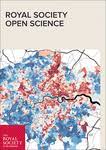As anthropogenic climate change pushes modern ecosystems into uncharted territory, marine ectotherms show particularly clear climate change impacts [1,2]. Coincidentally, marine invertebrates have the lion’s share of the macrofossil record, sometimes covering ancient episodes of rapid global warming (hyperthermals) that led to extinction crises, including mass extinctions [3]. This makes the fossil record an unrivalled but complex data resource. Foster et al. [4] present a rigorous comparison of three mass extinctions using a trait-based model and machine learning. Their main result, that the impacts of one mass extinction may not be a simple blueprint for the next mass extinction, has implications for the use of fossils to predict future extinction risk. However, we find their main conclusion, that ‘extinction selectivity during mass extinctions, therefore, appears to be unpredictable’, to be only half of the story and a pessimistic oversimplification of their results. We discuss limitations to their analyses, especially where these highlight exciting avenues and alternative approaches to uncover and improve predictability of biotic crises using palaeobiology [5]. We conclude that the debate over whether the fossil record is a useful information source for extinction risk assessment is only just opening and emerging as a fruitful and urgent area of research. in RSOP

